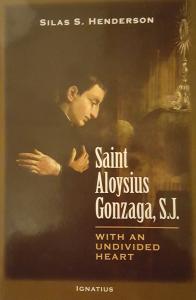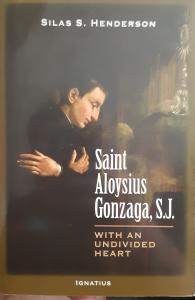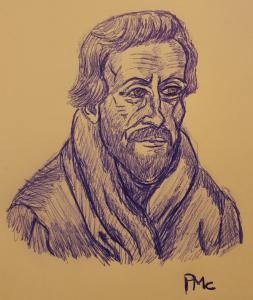 Silas S. Henderson, Saint Aloysius Gonzaga, S.J., With an Unidivided Heart (San Francisco, CA: Ignatius Press, 2017)
Silas S. Henderson, Saint Aloysius Gonzaga, S.J., With an Unidivided Heart (San Francisco, CA: Ignatius Press, 2017)
It’s been said that God is wonderful in His Saints. This was particularly true in sixteenth century Rome, which overflowed with women and men like Ignatius Loyola, Angela Merici, Philip Neri, and Robert Bellarmine, to name a few. Church reform was in the air. Blessed John Henry Newman called this phenomenon, which had followed a period of “monstrous corruption,” one of “the great arguments for Christianity.”
Silas Henderson, a Salvatorian Brother, has written a wonderful book on one of that era’s most beloved saints, Aloysius Gonzaga (1568-1591). Very often, hagiography is either lavishly pietistic or coldly academic. There’s a tendency to either make the subjects unreal and inaccessible, or to underplay the spiritual at the expense of socioeconomic factors. Brother Henderson avoids both extremes, achieving a fine balance between authentic devotion and thorough scholarship.
Born into the Italian nobility, Gonzaga renounced a life of princely ease and comfort in favor of the religious life. When a plague broke out in 1591, Aloysius was studying for the Jesuit priesthood in Rome. An able student known for great holiness, he tended the sick and dying at the cost of his own life. Beatified a mere fourteen years later, he was canonized in 1726. Exactly two centuries later after that, Pope Pius XI proclaimed him the Patron Saint of youth.
Brother Henderson is extremely familiar with recent scholarship, ably placing the saint within the larger historical context. For the general reader who desires to know more about the history of the Jesuit order and the Catholic Reformation, as well as sixteenth century religious life, this book fills a long-felt need. More importantly, the author gives a real sense of Aloysius’s inner fire, what made him spiritually tick.
Over the years, Brother Henderson admits, historic depictions of Aloysius have veered toward the “extremely sentimental… Unfortunately, this is the image of Aloysius Gonzaga that has endured.” Such an appraisal is inaccurate, he contends, for Aloysius was a fiercely determined young man who had to fight his powerful family for his vocation. Make no mistake: he was made of tough stuff.
So why does Aloysius matter today? Brother Henderson sums it up nicely:
Aloysius was born with everything but walked away from wealth and prestige to embrace a life of poverty, chastity and obedience that bespeaks an absolute trust in and abandonment to Divine Providence. It is this trust and abandonment, manifest from his earliest days, which make him a worthy guide and patron of old and young alike.
“This young man,” he adds, “knew that real nobility lies in our capacity to love.”
Maybe we can chalk it up to living in a more cynical era, but in recent decades, saint biographies have declined in popularity. And that’s a shame, because the saints have much to teach us. Their lives are the Gospel in action. Here in Brother Henderson’s book, we have a model of modern hagiography: informed and informative, interesting and inspiring. (I particularly enjoyed the appendix of prayers to St. Aloysius.) I for one look forward to more such works from Brother Henderson’s able pen.











